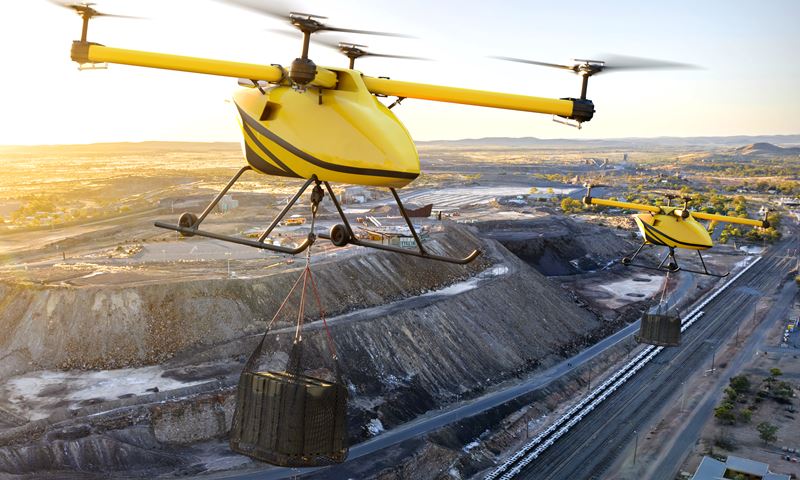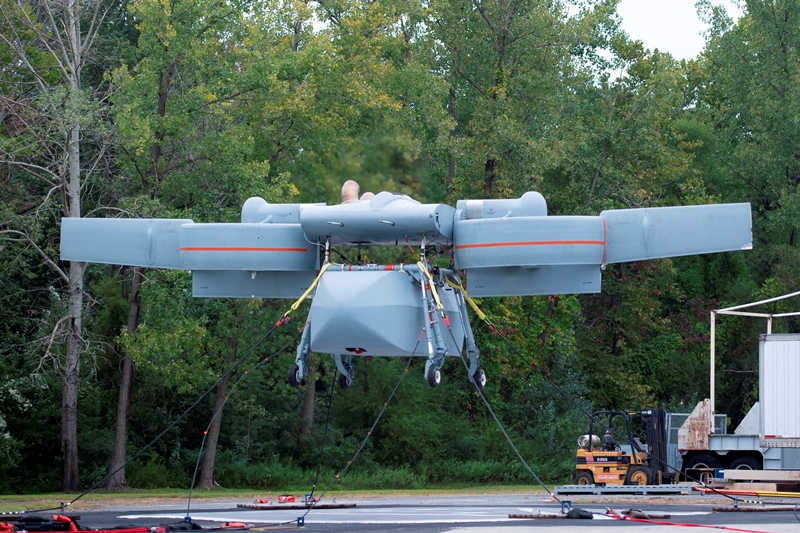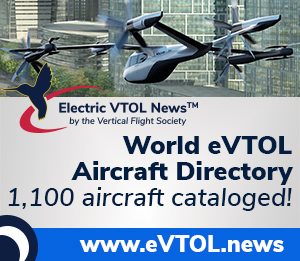
- 29 Apr 2025 08:00 AM
- 0
Piasecki Expands its VTOL Family
By Robert Moorman
Growth through acquisition and stronger ties to the civil and military remains part of the company’s vision for the future.
Coatesville, Pennsylvania-based Piasecki Aircraft Corporation (PiAC) announced the acquisition of Kaman Air Vehicles’ KARGO UAV Program on April 29. This continues the company’s long-term growth strategy of offering next-generation vertical takeoff and landing (VTOL) passenger and uncrewed cargo solutions.
“This acquisition is a perfect fit for Piasecki’s long-term vision for a family of autonomous VTOL uncrewed aircraft systems (UAS) solutions to address a diverse range of customer mission requirements in both government and commercial markets,” said PiAC CEO John Piasecki.
PiAC is also developing its Aerial Reconfigurable Embedded System (ARES) ducted-fan VTOL cargo transporter (see “ARES Milestone Flights,” Vertiflite, Jan/Feb 2025) and its eight-seat hydrogen-electric PA-890 compound helicopter (see “Hydrogen Begins to Take Off,” Vertiflite, July/Aug 2024).
Ross Seaflon, President and CEO of Kaman Corporation, said the sale of the KARGO UAV program “was a strategic decision to ensure that Kaman’s impressive UAV technology finds a home where it can thrive.” Kaman was acquired by private equity firm Arcline Investment Management in early 2024 (see “Rotorcraft News,” Vertiflite, March/April 2024) and the new owner is focusing on streamlining the company, founded by helicopter pioneer Charles Kaman in 1945.
KARGO UAV is described as an affordable medium-lift autonomous UAS. It is designed for use in combat zones or remote commercial cargo transport operations, utilizing advanced flight controls and modular payload integration.
KARGO’s cargo lift capabilities were recently demonstrated for the US Army, successfully demonstrating 500 lb (227 kg) cargo lifts for the US Army in August 2024. It completed fully autonomous flights using Near Earth Autonomy’s Peregrine system in October 2024.
An initial $12M award from the US Marine Corps Autonomous Resupply Vehicle — Expeditionary Logistics Program (MARV-EL) funded two full-scale prototypes (see “Advancing Autonomy for Cargo,” Vertiflite, Sept/Oct 2024). The first full-size KARGO demonstrator flew in December 2023 and the second one is under construction. PiAC plans to accelerate manufacturing readiness, targeting a production-ready vehicle by late 2026, with projected demand to exceed 300 aircraft, the company said.
PiAC’s CEO expects the addition of Kaman’s advanced UAS will align nicely with Piasecki’s existing VTOL portfolio. In announcing the acquisition, Piasecki will acquire “all intellectual property, assets and key personnel” associated with the KARGO UAV program. All research and development and operational activities will be relocated to Piasecki’s Heliplex headquarters in Coatesville.
PiAC’s objectives for the production version of the KARGO UAV:
- Max payload: 1,200–1,400 lb (544–635 kg)
- Max range: 1,100 nm (over 2,000 km) at 65 kt (120 km/h)
- Max speed: 100 kt (185 km/h)
- Altitude: Current engine certified up to 10,000 ft (3,000 m)
- Built for expeditionary logistics, enabling beyond-line-of-sight (BVLOS) operations and autonomous resupply
- Modular payload design for mission adaptability
Vertiflite posed several questions to John Piasecki about the KARGO acquisition.
Piasecki was asked if PiAC could afford to develop the KARGO UAV, particularly while developing ARES and the hydrogen helicopter, plus its new ownership of the new Heliplex Complex? “As we progress and need to scale up, we will seek capital for the platforms that have matured and graduated to that level,” he said.
Asked if the company planned to divulge financial details of the KARGO acquisition, Piasecki said: “The current activities are funded within PiAC and other funding available to the company. Ultimately, if we go into production, we will need capital to scale up the capability.”
On when a production variant will be built, he said: “The key element to that includes upgrading the rotor system, powerplant and the structure. That will probably take us about 18 months. We’re still doing technology development demonstrations.”
Piasecki said he hopes the current strategic partnerships will continue with the development of the KARGO UAV. Partners include Near Earth Autonomy, with which PiAC has a collaborative technology agreement. Another partner is PHI Group, the launch customer for the commercial variant of the KARGO UAS and a close advisor on the emerging market for autonomous cargo service. PiAC will likely seek US Federal Aviation Administration (FAA) certification for broader commercial use.
The interview pivoted to the macro topic on where the UAS market is headed. “On the military side, there are two dominant trends. There is a demand for speed and range for vertical lift platforms for a variety of missions and will drive technology,” said Piasecki. “And affordable risk-worthy VTOL autonomous systems will be an important part of the network of logistics support required to conduct what they call distributed operations” — military parlance for moving away from large scale formations for various branches of the military — “into non-contiguous, small, mobile combat elements.”
He added: “When you do that, your demand for logistics platforms goes up exponentially because the amount that any small unit can take is limited. In order to stay on the move and sustained, you need something that is right sized to the mission, affordable, autonomous and responsive with a small logistics footprint.”
On the civil side, there are numerous roles for a UAS, said PiAC, including transporting medical supplies, enhancing agricultural work, search and rescue, aerial patrol, tracking health of ecosystems and surveillance.
Regarding the powerplant, Piasecki said the first KARGO UAV production articles would be “turbine powered. That is necessary because of the performance requirements of the US Marines, both in terms of payload and range.” PiAC remains heavily involved in developing hydrogen fuel cells with ZeroAvia to develop hydrogen-electric VTOL aircraft, he said. In time, UAS cargo aircraft would be powered by hydrogen.
“PiAC is focusing on logistics VTOL UASs as a core strategic business plan,” he added. “We see a broad range of required capabilities in both the military and commercial sector. The KARGO UAV fits very well in the medium niche 500–1,000-lb (227–454-kg) payload capability and can be deployed and stored in a container.” Stated simply: “It is a very capable UAV in a box,” he said.
Piasecki specializes in the design, fabrication and flight-testing of experimental aircraft and UAVs. The company has developed and flown more than 25 UAS and VTOL aircraft to date, since its founding in 1955.
John Piasecki will be speaking about its VTOL UAS and hydrogen helicopter developments at the Vertical Flight Society’s 81st Annual Forum & Technology Display in Virginia Beach, Virginia, being held May 20-22.









Leave a Comment